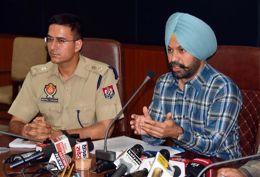
Photo for representation. — iStock
Vibha Sharma
Chandigarh, February 7
After braving a bitter cold wave this winter, people in Northwest India can expect a season of above-average temperatures in the coming summer season.
Notably, the year 2022 had witnessed an unusually long series of heat waves starting March-end with April being the hottest in Northwest India in 122 years and temperatures touching above 40°C in parts of Bihar, Jharkhand and West Bengal.
The trend has been continuing almost since the mid-2010s. Experts say global warming backed by greenhouse gas emissions is resulting in intensity and frequency of heat waves increasing across the world,just like other weather-related extremeevents.
According to Berkeley Earth, the last eight years were the warmest eight years and June 2022 the warmest June on land since records began in the mid-1800s.
As per the WMO, average temperature globally in 2021 was around 1.11°C above average world temperatures between 1850 and 1900—known as the “pre-industrial average”.
The year 2022 saw multiple intensive heat waves in Asia, America, Europe, North Africa and Oceania shatter several temperature records.
Meanwhile, just six days into February 2023, on Monday January 6 the plains of the Northwest registered above normal day and night temperatures, according to the IMD data.
Minimum temperatures remained appreciably above normal (3.1°C to 5.0°C) at a few places over Haryana, Chandigarh and Delhi and East Rajasthan and above normal (1.6°C to 3.0°C) over Jammu and Kashmir and Punjab, the weather office said. Likewise, maximum temperatures too remained appreciably above normal (3.1°C to 5.1°C) at some places over Uttarakhand, Haryana, Chandigarh and Delhi and above normal (1.6°C to 3.0°C) at most places over Punjab.
Next few days
The weather is largely expected to be on the warmerside.
A fresh Western Disturbance will approach Western Himalayas from night of February 8 due to which rain and snowfall will commence over Gilgit-Baltistan, Muzaffarabad, Jammu Kashmir, Ladakh and Himachal Pradesh and increase in intensity on February 9.
Light rain and snow is also expected over Uttarakhand on February 9 and 10.
The northern parts of Punjab may also see isolated rains on February 9 and 10.
Due to this, there will be a fall in minimum temperatures by about 2°C over many parts of Northwest in the next 24 hours. However, the mercury will rise by 2-4°C till January 10 only to fall by 2-3°C thereafter till February 12, the weather office says.
Bitterly cold, relatively dry January
A prolonged spell of extensive fog and low cloud coverage observed over Northern and Central parts of India during January 1 to 11 resulted in cold days to severe cold days during the period.
It was followed by another shorter spell of dense fog to very dense fog and cold day to severe cold day during January 14-18. There were two major spells of cold wave to severe cold wave during January 1 and 9 and January 14 and 18 over Northern and Central parts of India.
Delhi experienced cold wave to severe cold wave mainly during January 4 and 9 and January 14 and 18.
The country on the whole also received less than average rains in January 2023. The 14.8 mm it received on the whole was 13% less than its Long Period Average (LPA) of 17.1 mm. In fact, rain over the homogeneous region of East and Northeast India (1.9 mm) was fourth lowest since 1901, according to the IMD.
Join Whatsapp Channel of The Tribune for latest updates.




























